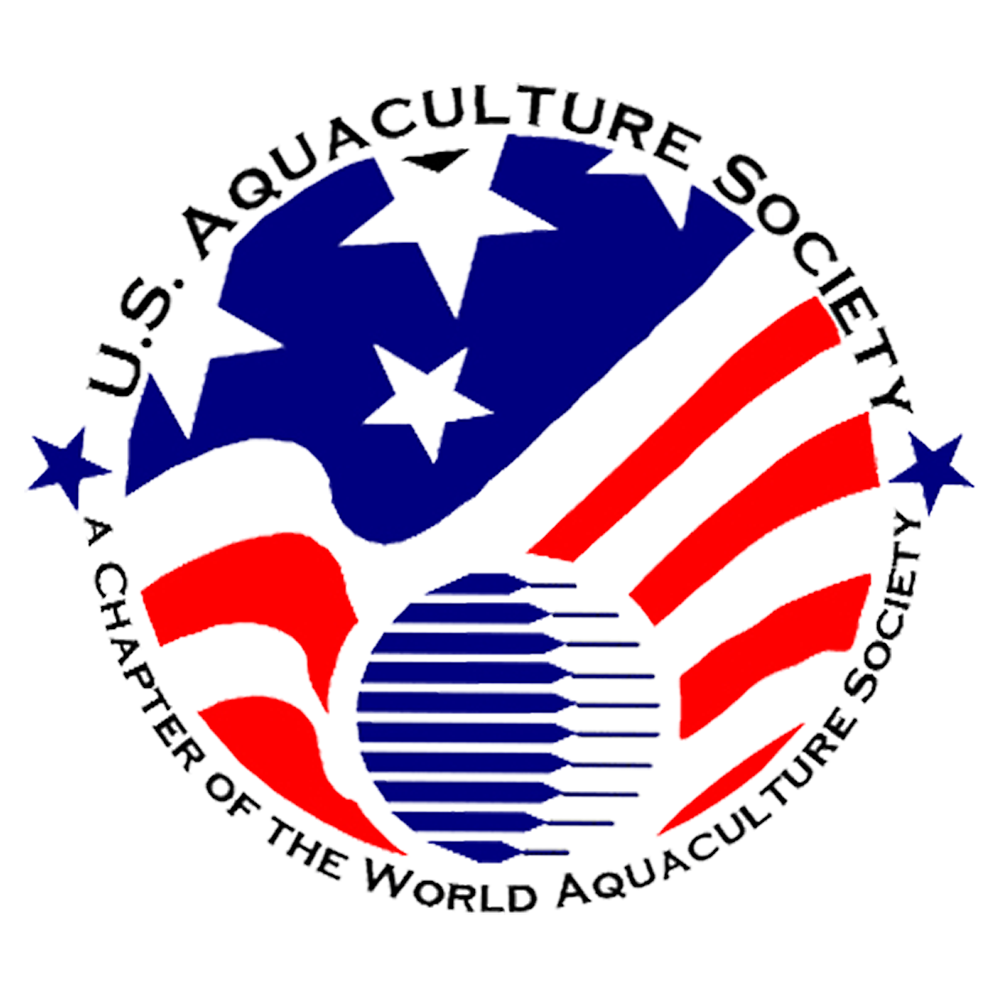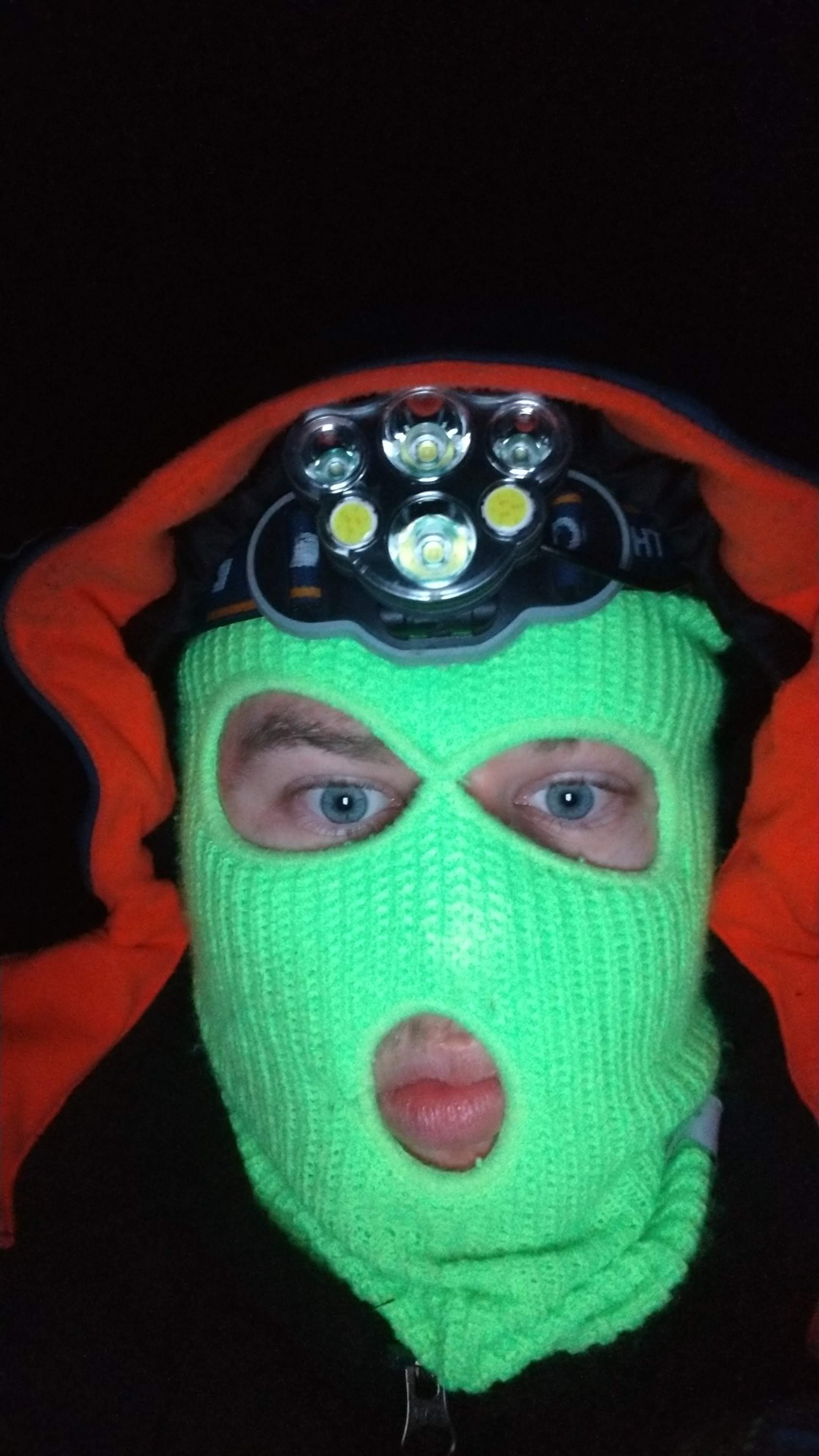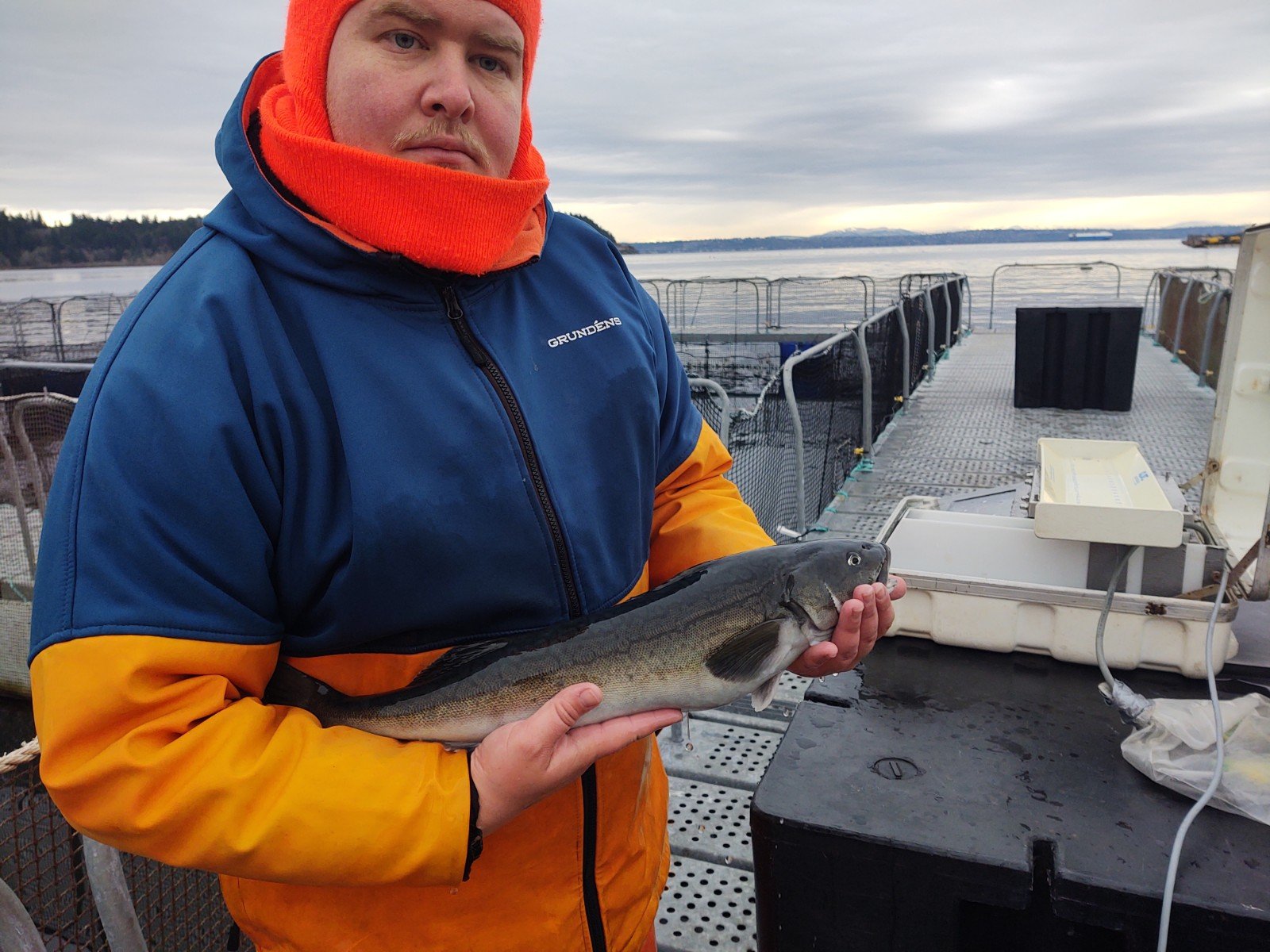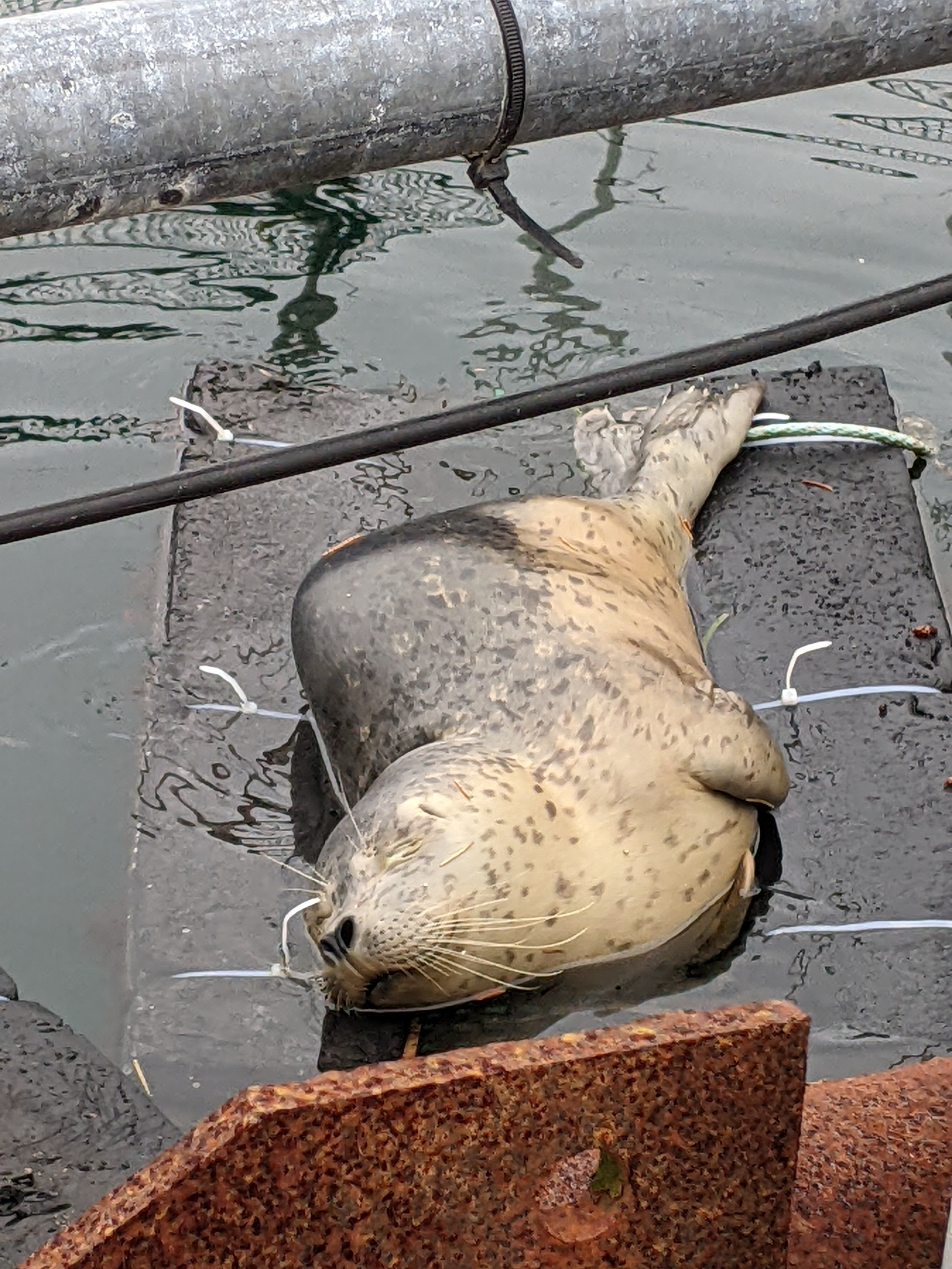Highlighting Sablefish Program Manager, Stephen!
Interviewed by Carla Schubiger on December 12, 2022
1. Please introduce yourself (briefly; name, position, what are you working on)?
My name is Stephen Pinna. I am the manager of the Jamestown S'Klallam Tribe's Sablefish Program located in Manchester, WA, near Seattle. I am not a tribal citizen, but I got hired by a tribal citizen, the late Kurt Grinnel, who was a commercial fisherman. He saw the tides turning regarding wild catch declines and the continued strong demand for seafood proteins. His goal was to move from wild harvest to farming, and this has been supported by the tribe. So, they started with oyster and geoduck farming and plan to do commercial-scale fish farming in the future. A part of this plan is the collaboration with the NOAA Northwest Fisheries Science Center. NOAA had space for a pilot net pen system in which the tribe is now working on raising a native species of interest – Sablefish. So essentially, we are raising our sablefish in NOAA’s small research net pen system as a pilot program with the goal of raising these fish in their natural waters of the Pacific Northwest and developing a domestic Sablefish industry in the USA. Besides growing these fish as one of the tribe’s primary businesses, the aim is to also provide jobs and careers to tribe members and their neighboring communities.
2. How did you get your first job in the field of aquaculture? And what was the position?
I was born in New York but grew up in Sarasota county Florida. I did my undergraduate in Eastern European studies and did a scholarship program in Poland in 2015. But I realized that I did not want to work in my chosen field. So, I came back and worked in a college library in Sarasota where I would meet many different people, hang out with academics, and start hearing more about aquaculture. So, next, I did a Master’s program in Food Security and Sustainability at the University of Southern Florida and took a marine aquaculture course. This essentially led to my first job in aquaculture during my Master’s program: I worked for the Sarasota county’s mosquito control program, where I helped raise and distribute mosquito fish (Gambusia holbrooki) as a form of biological control. But yea, ultimately, Florida is hot and humid and has a lot of mosquitos, so I moved across the U.S. to Washington, taking a job on an oyster farm.
3. What advice would give someone starting in the field of aquaculture (maybe a student)?
Research the industry in your area (or the area/field you want to work on) and get your basics done, such as a bachelor's or associate’s degree. Then, look at working at an aquaculture farm to get hands-on experience early. Opportunities for further study and career advancement will present themselves later on. Still, many employers will value and look for candidates with just a bit of hands-on work experience. In addition, professional organizations like the US Aquaculture Society and the National Aquaculture Association provide internship and employment opportunities via their job boards! Also, conferences are great for making connections with future employers!
4. What is a trend that you have seen come and go? Or where do you envision the aquaculture industry in 10 years?
I think in 10 years, the U.S. aquaculture industry workforce will be comprised of highly skilled, well-educated workers using advanced technologies. Already today, depending of the culture system, you need an understanding of current dynamics or water chemistry, so a lot more technical knowledge is required. However, it is still possible to get pretty far without any higher education, but even a trade like carpentry, plumbing, or electronics could get you pretty far.
5. What advice would you give your younger self?
Study aquaculture sooner! I wished I had found the aquaculture field sooner than at 25 years old, but I am so happy where I am at now and really enjoy what I am doing. However, it can be challenging; there are many technical and political things that can be tricky to navigate. But at the same time, I cannot see myself doing anything else. It is definitely my calling.
6. What is something that most people don't know about the aquaculture industry or your role in the industry?
Most people do not know this industry exists. Or if they do know about aquaculture, they may think of it in the worst possible way due to misinformation. The U.S. aquaculture industry has the highest environmental standards in the world but, in contrast to the rest of the world, is a bit behind technology and scale-wise. Maybe the catfish industry is cutting-edge in the USA, but the rest of the marine finfish industry is behind a lot of Asian or Mediterranean countries, which culture many different marine finfish species; while here, we still fight over whether we can sustainably do net pen culture. Also, many producers are pushed into Recirculating Aquaculture systems (RAS), but the issue is that a lot of the RAS technology is produced outside of the U.S., so people working with these RAS systems here do not have the training or the familiarity with these systems. So if you hire someone for a RAS farm in Ohio, you have to train them from scratch, while in other countries, for example, Korea, it is easier to find someone with a deep technical background in RAS because the technologies are used at large scales already.
7. In your opinion, what is the most fascinating part of the aquaculture industry? Why?
The diversity of species and people. All over the world, different people are working on different projects, but the fundamentals are similar enough that we can learn from each other.
8. Do you a have a funny story to share about something that happened to you (field-related)?
Lots of them are tied to wild animal interactions - I see seals, sea lions, river otters, and all sorts of birds. The crows love to distract you while their buddies try to eat our fish feed. When we feed by hand, one crow distracts you while his buddy tries to eat as much as possible while you are not looking. Also, the seals that haul out on our structures and try to look cute, and when you chase them off, these “furry bananas” all jump in like it is synchronized swimming. River otters are the “worst” and poop on everything. They are all cute until you realize how much of a nuisance they are… :D
9. If you could be any aqua species, what would you be and why?
An Orca! Orcas travel a lot, and they get to eat sea lions! Sea lions are such a nuisance! They are trying to nuzzle their nose into the net pens and eat our fish. And then, when you catch them doing it, they give you the side-eye - like a puppy - as if they did not do anything and try to get away with it. But when the orcas come into the sound near the farm, all the sea lions disappear, even though the orcas here eat fish only. But the sea lions have not gotten that memo yet! So, it is nice to have the orcas around, as they do not interfere with the net pens but keep the sea lions away.
10. Favorite seafood dish? Would you like to share your favorite recipe?
Beer-steamed mussels! Sacrifice a bottle of beer, steam the mussels in it, add some garlic and butter, and done. I love mussels on my plate but not anywhere else, like the net pens or our equipment.
11. What is your favorite aqua and/or non-aqua past-time?
I love reading literature from different countries as it is like traveling. In addition, I also like to go to concerts, and, fortunately, I live close enough to Seattle to see many shows and still catch a ferry home.
12. Anything people would be surprised to know about you?
I used to write for Vice Magazine's Polish subsidiary when I was in Warsaw.
~~~~~~~~~~~~~~~~~~~~~~~~~~~~~~~~~~~~~~~~~~~~~~~~~~~~~~~~~~~~~~~~~~~~~~~~~~~~~~~~~~~~~~~~~~~
Thanks for taking the time to tell us a little about you, Stephen! We really enjoyed it!






